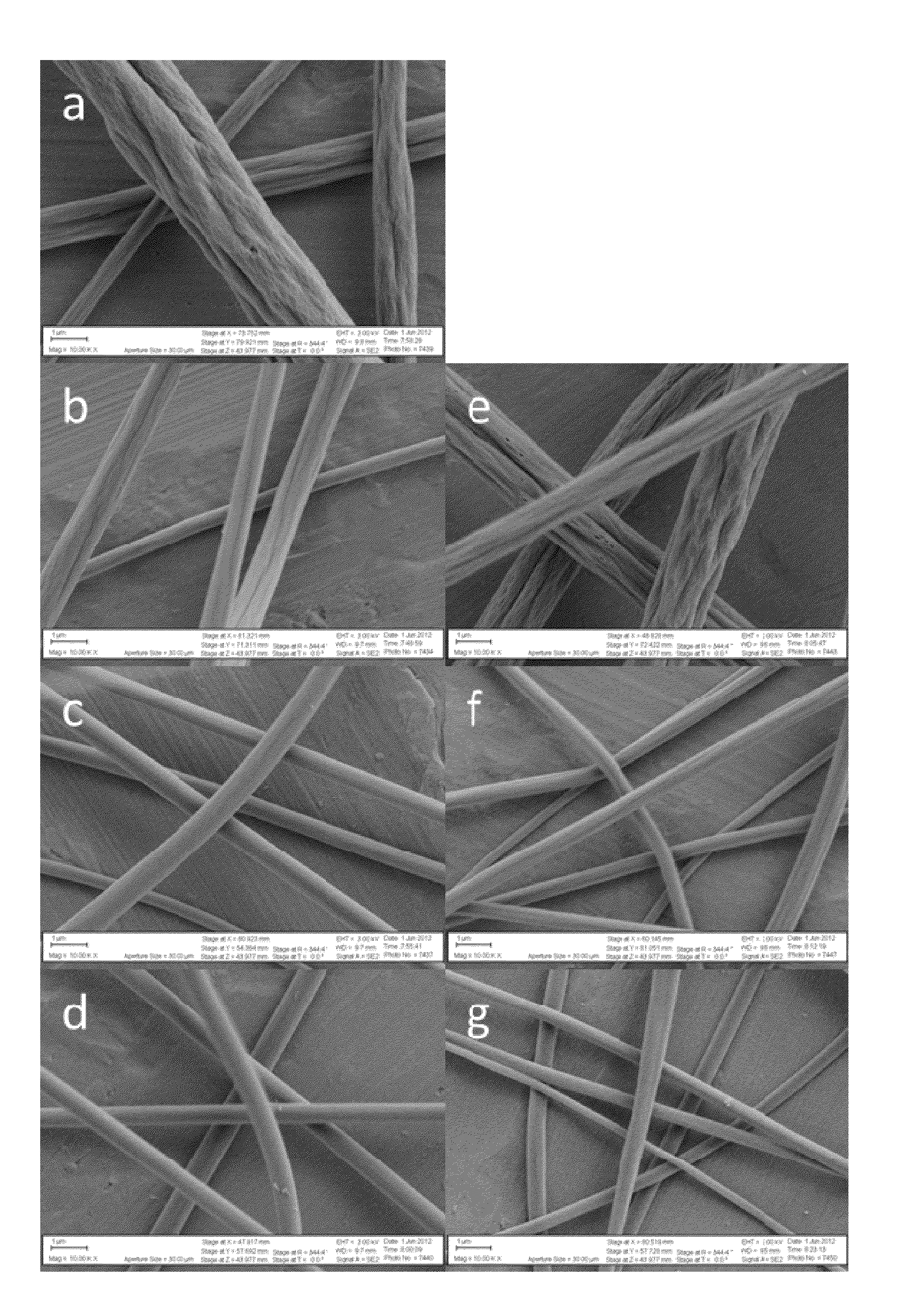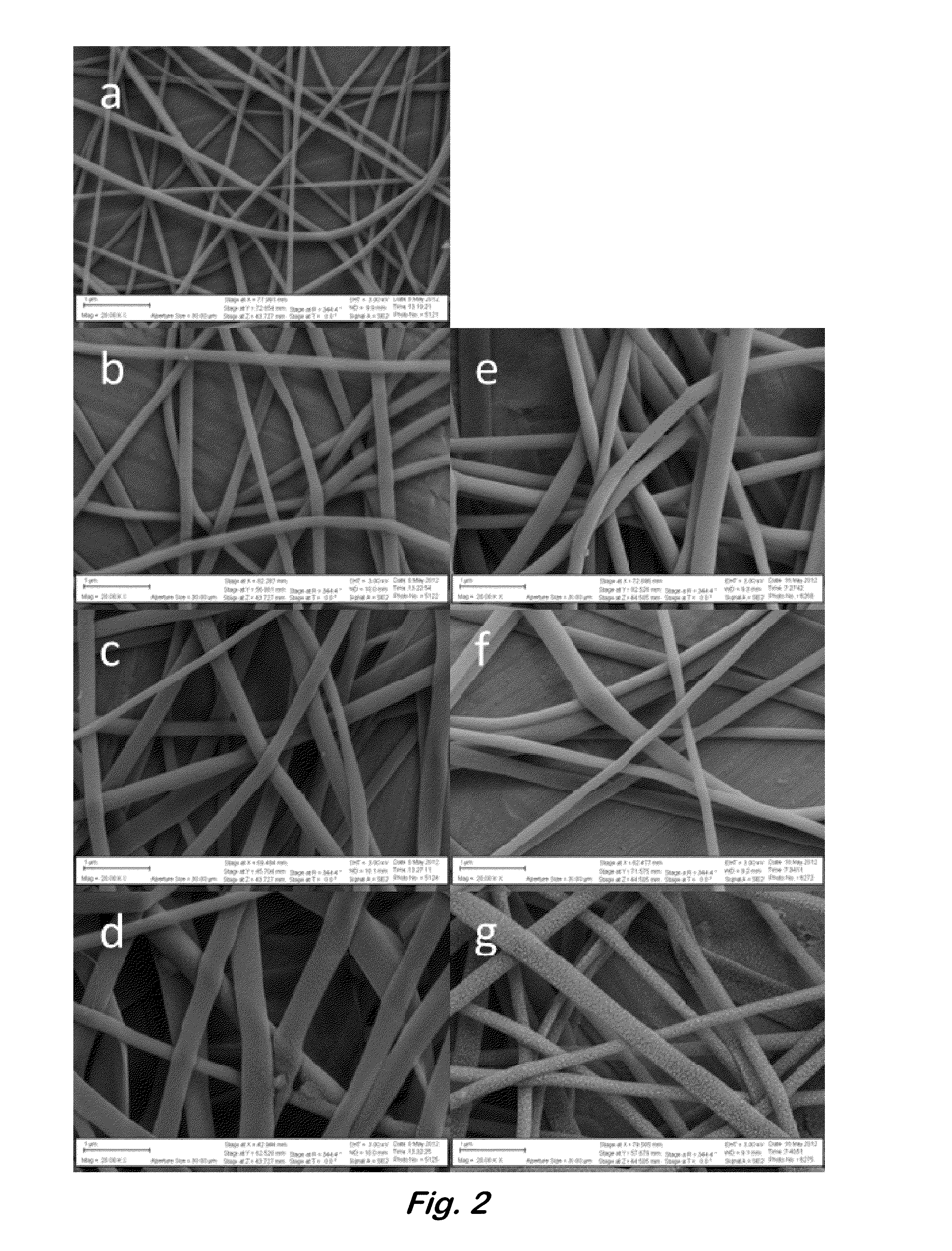Electrospun polymer nanofibers with surface active quaternary ammonium salt antimicrobials
a technology of quaternary ammonium salt and nanofibers, applied in the field of antimicrobial fibers, can solve the problems of ionic molecules entering the electrospinning solution, affecting the morphology and diameter of the fiber, and reducing the antimicrobial activity over the lifetime of the material,
- Summary
- Abstract
- Description
- Claims
- Application Information
AI Technical Summary
Benefits of technology
Problems solved by technology
Method used
Image
Examples
example 1
[0026]Materials—All solvents were reagent grade and used without further purification. Purchased starting materials were used without further purification. High molecular weight nylon 6,6 (Mn ˜60,000), poly(bisphenol A carbonate) pellets (Mw ˜64,000) (PC), and cetyltrimethylammonium bromide (CTAB) were purchased from Sigma Aldrich (St. Louis, Mo.) and used as received.
example 2
[0027]Synthesis of quaternary ammonium biocides—C16EO1, a surface segregating QAS, was prepared following previously described procedures (Harney et al., ACS Appl. Mater. Interfaces 2009, 1, 39-41). Briefly, 7.81 mmol phosphorous tribromide was added drop-wise to a solution of 15.6 mmol ethylene glycol monomethyl ether maintained at 0° C. The solution was allowed to equilibrate to room temperature, and then heated to 90° C. when the solution turned yellow. After the solution was allowed to cool, 6 mL of 10% NaHCO3 was added. The solution was extracted with diethyl ether and dried with MgSO4. This product (1-methoxy-2-bromoethane) was reacted with N,N-dimethylhexadecylamine under nitrogen in ethanol at 83° C. for 24 hours. The resulting C16EO1 product was recrystallized to form an off-white powder. The structures of the resulting product (C16EO1) and CTAB are shown below.
example 3
[0028]Polymer preparation—Nylon solutions (15 wt. %) were prepared by mixing separately prepared solutions of nylon in formic acid (4 mL) and QAS in formic acid (1 mL) to result in 0, 1, 5, and 10 wt. % QAS relative to nylon. Preparation of comparable PC solutions (25 wt. %) were made by mixing solutions of PC in methylene chloride (4 mL) with QAS in DMF (1 mL).
PUM
| Property | Measurement | Unit |
|---|---|---|
| Diameter | aaaaa | aaaaa |
| Amphiphilic | aaaaa | aaaaa |
| Concentration | aaaaa | aaaaa |
Abstract
Description
Claims
Application Information
 Login to View More
Login to View More - R&D
- Intellectual Property
- Life Sciences
- Materials
- Tech Scout
- Unparalleled Data Quality
- Higher Quality Content
- 60% Fewer Hallucinations
Browse by: Latest US Patents, China's latest patents, Technical Efficacy Thesaurus, Application Domain, Technology Topic, Popular Technical Reports.
© 2025 PatSnap. All rights reserved.Legal|Privacy policy|Modern Slavery Act Transparency Statement|Sitemap|About US| Contact US: help@patsnap.com



